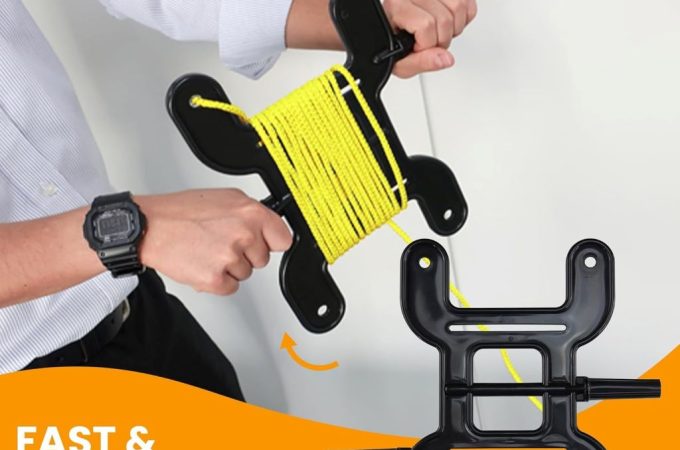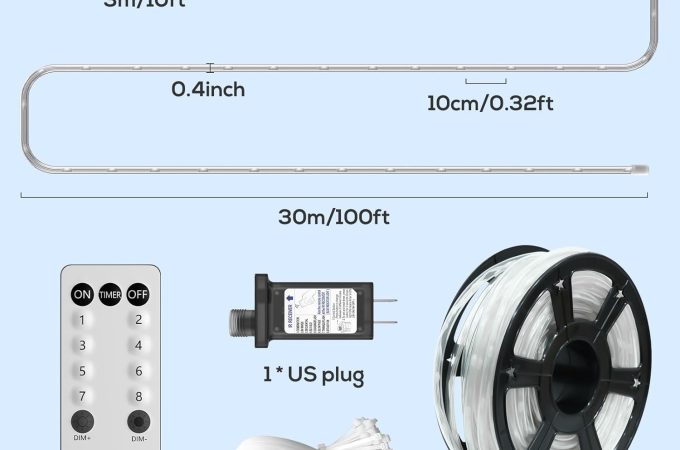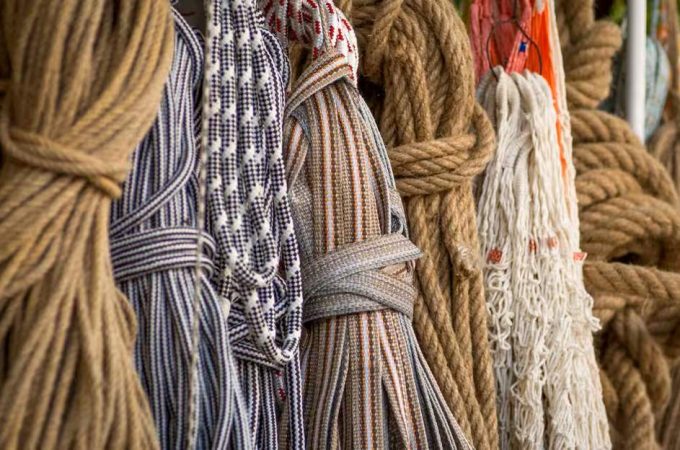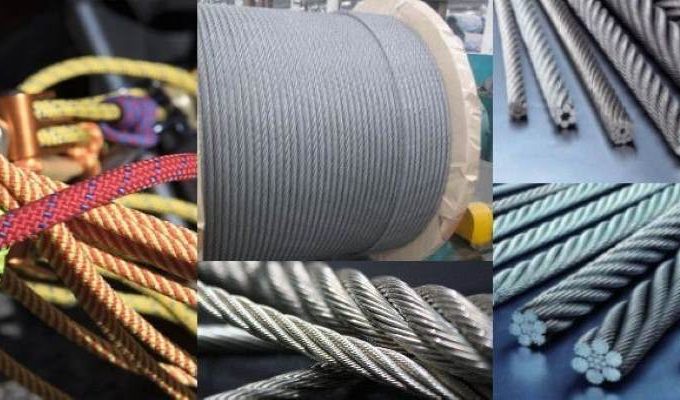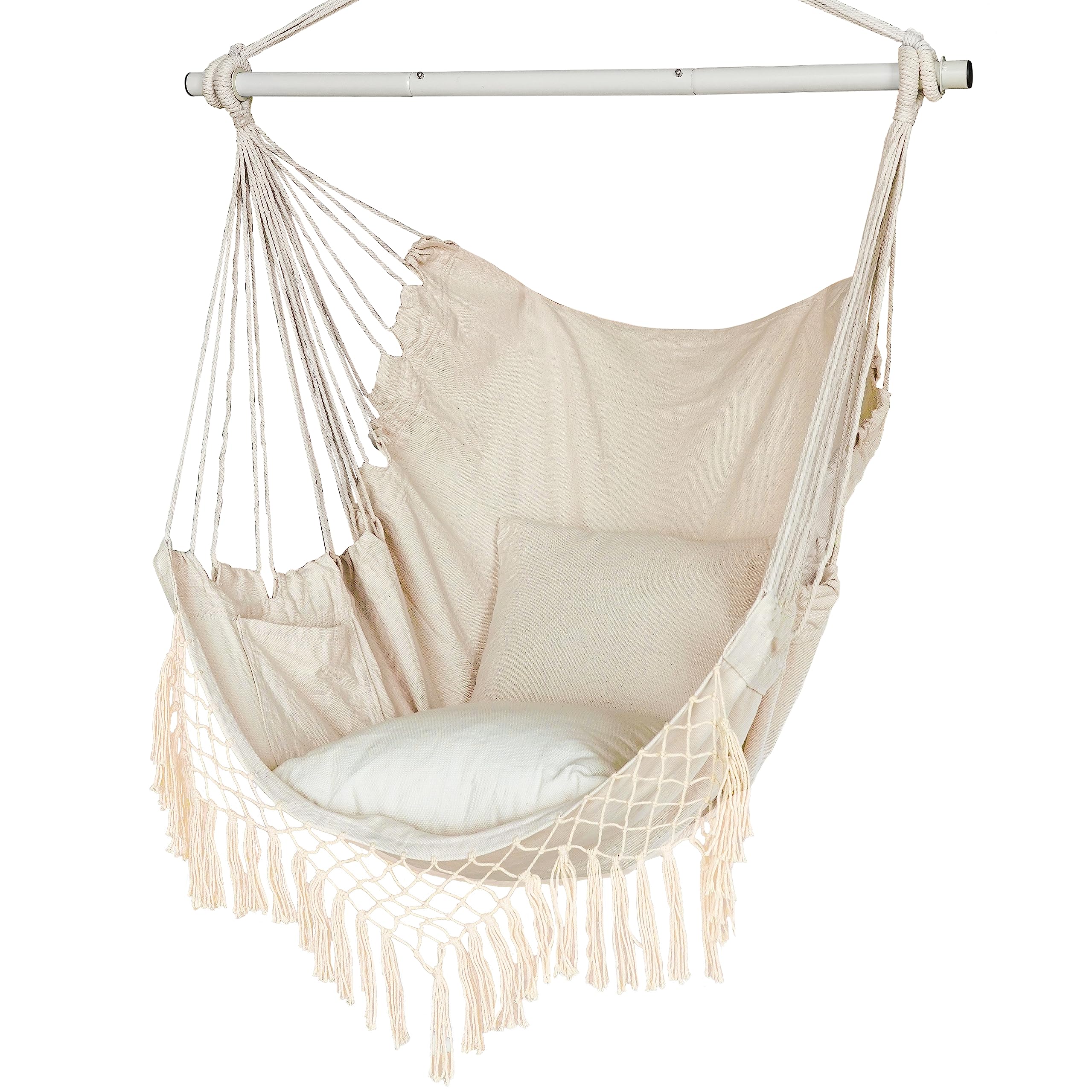
Best Hammock Rope: Strength, Comfort & Durability!
The best hammock rope is durable and weather-resistant. Polyester and nylon are top choices for strength and longevity.
Contents at a Glance
ToggleSelecting the right hammock rope is essential for a secure and comfortable lounging experience. High-quality ropes ensure safety and enhance the overall durability of your hammock setup. Polyester ropes are favored for their ability to withstand harsh weather conditions without degrading.
They also resist stretching, which means your hammock will maintain its height and tension over time. Nylon, known for its impressive strength-to-weight ratio, is another excellent option. It offers elasticity, which can be more comfortable for those who prefer a little give in their hammock. When considering the purchase of hammock rope, prioritize UV resistance and load-bearing capacity. A blend of functionality, comfort, and safety will lead to many enjoyable hours spent suspended in tranquility.
Introduction To Hammock Ropes
Swinging gently in a hammock is the epitome of relaxation. Whether it’s between two shady trees or on a cozy porch, a hammock’s allure is undeniable. But beyond the fabric cradle, the unsung heroes of stability and comfort are the hammock ropes. These pivotal components deserve far more attention, for without them, no hammock would hold. From the ancient designs to the modern synthetics, hammock ropes have traversed a long path to perfection, blending strength, comfort, and durability into thin strands of reliability.
Evolution Of Hammock Ropes
The evolution of hammock ropes is a tale of innovation. Our ancestors used natural fibers, ingeniously woven to create the first hammock ropes. Over time, as technology progressed, so did the methods of producing these ropes. Today, we have a diverse array of materials at our disposal, from the rugged manila used by sailors of old to the modern UV-resistant polyester that graces our backyards.
Importance Of Strength, Comfort, And Durability In Hammock Ropes
In the world of hammock ropes, the triad of strength, comfort, and durability governs supremacy. A hammock rope must bear the weight of occupants without fail (strength), caress the skin without irritation (comfort), and withstand the elements for seasons to come (durability). These attributes ensure that every moment spent in a hammock is safe and soothing.
Criteria For Evaluating Hammock Ropes
Selecting the best hammock rope is crucial for an optimal leisure experience. There are several criteria to consider:
- Material: The type of fiber used, such as polyester, nylon, or cotton, will affect the rope’s feel and weather resistance.
- Diameter: Thicker ropes generally provide greater strength but can be heavier and less flexible.
- Construction: The way a rope is woven, such as braided or twisted, influences its stretch, knotability, and overall performance.
- Maximum Load: Always check the rope’s weight capacity to ensure it can safely support the users.
- Weather Resistance: If the hammock is for outdoor use, look for ropes treated to resist sun and moisture damage.
- Eco-Friendliness: For the environmentally conscious, ropes made from sustainable materials or processes are worth considering.
By scrutinizing these factors, one can zero in on the perfect hammock rope that promises endless hours of relaxation and serenity aloft.
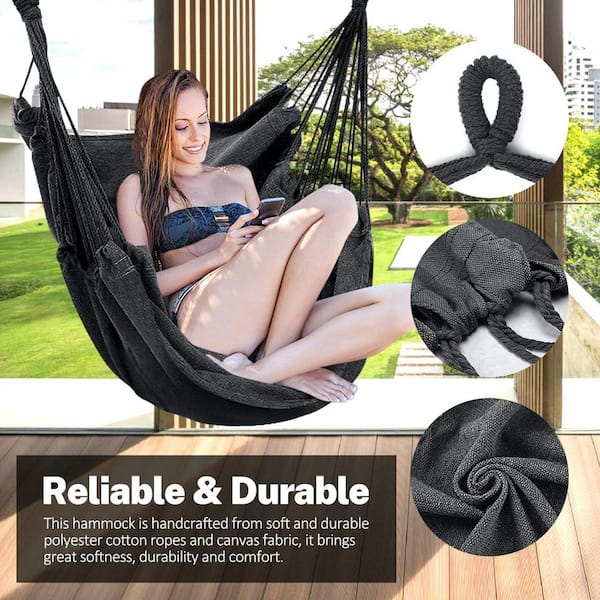
Credit: www.homedepot.com
Exploring Hammock Rope Materials
When selecting the perfect hammock, the material of the rope is just as crucial as the design itself. The rope can dictate the durability, comfort, and usability of your hammock. Whether you’re setting up a backyard relaxation spot or outfitting for a rugged camping trip, understanding the different materials available can ensure your hammock investment lasts and provides the comfort you desire. Let’s delve into the most popular hammock rope materials on the market, examining their strengths and unique qualities.
Nylon: A Popular Choice For Strength And Durability
Nylon ropes are synonymous with exceptional strength and resilience. Ideal for outdoor enthusiasts who need a reliable setup, nylon offers high tensile strength, ensuring your hammock can hold significant weight without fraying or breaking. This material is not only durable but also exhibits excellent abrasion resistance. Here’s why nylon should be on your list:
- Highly durable with the ability to withstand heavy loads
- Resistant to mildew and rot, making it suitable for humid environments
- Quick-drying properties, ensuring minimal maintenance
Polyester: Weather-resistant And Comfortable
For those that prioritize a weather-resistant hammock, polyester ropes are a standout choice. Polyester maintains its integrity under various weather conditions, resisting the damaging effects of UV rays and moisture. Additionally, it’s a favorite for comfort-seekers, providing a smooth and stretch-resistant surface that keeps its shape over time. Key benefits include:
- Superb resistance to sunlight and weathering
- Less stretch than nylon, meaning more consistent hammock tension
- Soft texture for a comfortable lounging experience
Cotton: Traditional And Comfort-driven
Cotton hammock ropes hark back to traditional weaving methods, offering a naturally soft touch that many find superior in terms of comfort. While not as weather-resistant as synthetic ropes, cotton provides a cozy embrace that many users adore, particularly for indoor or well-protected outdoor spaces.
Hemp And Other Natural Fibers: Eco-friendly Options
In a world where environmental consciousness is ever-growing, hemp and other natural fiber ropes present an eco-friendly alternative. Hemp, in particular, boasts a high tensile strength and natural resistance to rot. These ropes are perfect for the eco-minded consumer looking for a sustainable option without compromising on durability. Natural fibers are often:
- Biodegradable and sustainable
- Naturally antimicrobial, preventing mold and mildew
- Durable, matching strength with conscience
Composite Materials: Advanced Rope Technologies
The latest innovations in hammock rope technologies belong to composite materials. These high-tech ropes blend the best properties of various materials to create ropes that are lightweight, ultra-strong, and versatile. Often used by serious backpackers and outdoor adventurers, composite ropes bring forth the following advantages:
- Lightweight design for easy packing and transport
- Increased durability compared to single-material ropes
- Enhanced resistance to the elements, including moisture and UV rays
Key Features Of The Best Hammock Ropes
Searching for the perfect hammock rope can feel overwhelming with so many options on the market, but knowing the key features of the best hammock ropes can lead you directly to blissful relaxation. Let’s delve into the characteristics that are non-negotiable for top-tier hammock ropes, from durability to comfort, ensuring your hammock setup is as serene as it is secure.
Tensile Strength: Understanding Weight Limitations
The tensile strength of a hammock rope dictates how much weight it can support without breaking. Ensuring that your rope has a high tensile strength is crucial for safety and longevity, as it bears the entire load of the hammock and its occupants. Look for ropes that specify their weight capacity, which should comfortably exceed your combined weight needs.
Rope Texture And Skin Contact Comfort
When lounging in your hammock, the rope’s texture is crucial as it comes into contact with your skin. A soft rope reduces friction and potential irritation, ensuring your hammock time is a pleasant experience.
Weather Resistance For Outdoor Durability
Most hammocks hang outdoors, and their ropes must withstand various weather conditions. The best hammock ropes feature robust weather resistance, capable of enduring rain, wind, and fluctuations in temperature without deteriorating or losing strength.
Uv Resistance To Prevent Degradation
Exposure to the sun’s UV rays can weaken and degrade ropes over time. Quality hammock ropes are treated for UV resistance, which helps maintain their integrity and color, even with constant sun exposure.
Mold And Mildew Resistance For Longevity
Hammocks often stay outdoors for extended periods, and moisture can lead to mold and mildew. A crucial feature for the best hammock ropes is the ability to resist mold and mildew, preserving the rope’s strength and your health.
Stretch Factor: Ensuring A Stable Hammock Experience
A rope’s stretch factor can significantly affect the comfort and stability of a hammock. Overly stretchy ropes may lead to sagging, while too little stretch can make the hammock feel rigid. The ideal rope offers a balanced stretch that provides a stable yet cushioned experience.
Choosing The Right Hammock Rope For Your Needs
Choosing the Right Hammock Rope for Your Needs is a vital step in setting up your perfect hangout spot. Whether you love star-gazing in the backcountry or swaying gently in your backyard sanctuary, the type of hammock rope you select can make a huge difference in your comfort and safety. Let’s explore the key considerations to help you select the ideal hammock rope that aligns with your lifestyle and relaxation goals.
Assessing Your Usage: Camping Vs. Backyard Relaxation
First and foremost, consider the primary location for your hammock. An adventurer who needs a rope for camping might prioritize durability and weather-resistance. On the other hand, someone desiring a peaceful retreat in their backyard may opt for comfort and aesthetics. Make sure to choose a rope that matches the environmental demands it will face.
Comparing Rope Diameter And Construction Types
Rope diameter and construction are essential to the strength and usability of your hammock setup. Thicker ropes often offer greater durability but might be overkill for light use. In contrast, slimmer ropes are more suitable for light loads and offer easier portability. Rope construction, such as braided or twisted, affects the rope’s flexibility and knot-holding ability. Ensure your choice offers the right balance between strength and functionality.
Hammock Rope Length: How Much Do You Need?
Calculating the required length of your hammock rope is crucial. You want enough length to span between anchors with some extra for adjustments. A good rule of thumb is to have a rope length of at least twice the distance of your anchor points. Remember, it’s better to have slightly more rope than to come up short.
Accessory Compatibility: Carabiners, Straps, And Knots
Ropes must work hand-in-hand with other accessories. Ensure your rope is compatible with carabiners, straps, and that it can be securely tied with knots you’re comfortable making. Test your rope with these accessories to ensure a safe and reliable setup.
Price Vs. Performance: Finding Value For Money
A higher price doesn’t always equate to better performance. Seek out hammock ropes that offer the best mix of durability, ease of use, and price to find real value for money. Setting a budget can help narrow down your options without compromising on quality.
Product Reviews And Recommendations
Finally, take advantage of the experiences of other hammock enthusiasts. Reading product reviews and recommendations can guide you toward high-quality options that have been tested in the field. Look for consistently high ratings and detailed reviews that address your specific concerns.
Maintenance And Care For Hammock Ropes
Ensuring proper maintenance and care for your hammock rope is indispensable for any hammock owner. Not only does it extend the life of the rope, but it also maintains its strength and safety. Recognizing the need for consistent upkeep, this section delves into practical steps you can take to preserve the integrity of your hammock ropes.
Cleaning Techniques To Prolong Rope Life
One of the keys to keeping your hammock ropes in tip-top condition is to employ effective cleaning techniques. Over time, ropes can accumulate dirt, sweat, and grime, which may degrade the material. Here’s how to clean your hammock ropes properly:
- Wash by hand using mild soap and lukewarm water to prevent damage.
- Gently scrub away dirt with a soft brush or cloth.
- Rinse thoroughly to remove any soap residue.
- Allow the rope to air dry completely before storage; avoid direct sunlight as it can weaken the fibers.
Storage Tips To Prevent Damage
How you store your hammock rope can significantly impact its longevity. Follow these storage tips to prevent damage:
- Ensure the rope is dry before storing to avoid mildew and rot.
- Coil the rope loosely to maintain its natural lay and prevent kinks.
- Store in a cool, dry place away from chemicals and rodents.
- Use a rope bag or breathable container to protect from dust and direct sunlight.
Regular Inspection For Wear And Tear
Regular rope inspection is essential to identify potential weak spots before they become hazardous. Scrutinize your hammock rope frequently, looking for:
- Signs of fraying or worn threads, which can indicate areas of weakness.
- Discoloration or stiff sections that could suggest chemical damage or exposure to high temperatures.
- Any deformation in the rope structure, such as flattened areas or inconsistent diameter.
Addressing these signs early can prevent rope failure and ensure safe hammock enjoyment.
Best Practices For Rope Safety
Rope safety should be your top priority. Adhere to these best practices to ensure a safe and enjoyable experience:
- Never exceed the recommended weight limit of your hammock rope.
- Use appropriate knots that don’t strain or weaken the rope.
- Keep the rope away from sharp edges and rough surfaces that can cause abrasion.
- Replace ropes periodically, even if they don’t show signs of damage, to mitigate the risks associated with material fatigue.
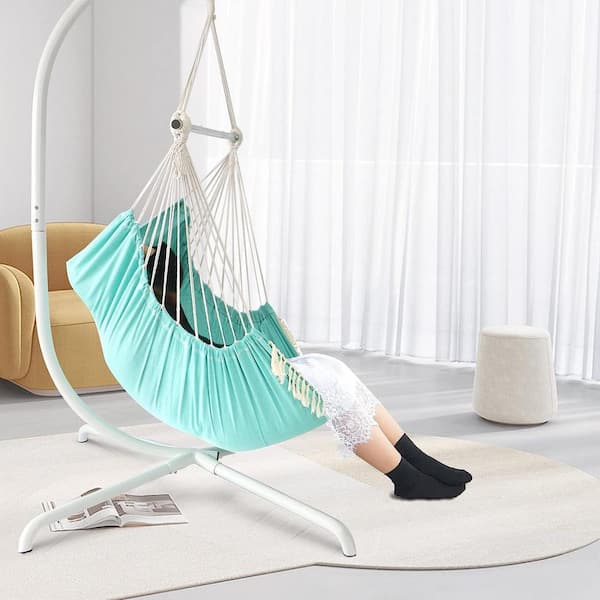
Credit: www.homedepot.com
Environmental And Ethical Considerations
When choosing the perfect hammock rope, the comfort and durability are certainly key factors to consider. Yet, environmental and ethical considerations are equally essential in today’s eco-conscious marketplace. The impact of your hammock on the planet and its inhabitants is a conversation worth having. In this spotlight, we’ll explore the virtues of materials and practices that aim to safeguard our environment and uphold ethical standards.
Sustainable Manufacturing Practices
The first step toward an eco-friendly hammock experience begins with sustainable manufacturing practices. Ropes made with organic fibers such as hemp or cotton, sourced from farms that employ responsible land use, serve as excellent examples. Manufacturers who prioritize a minimal carbon footprint often:
- Use renewable energy sources
- Opt for water-efficient processes
- Implement waste reduction initiatives
- Engage in fair labor practices
Such attention to sustainability ensures that the creation of your hammock rope sustains the health of the planet and its people.
Cruelty-free And Vegan Rope Options
For those committed to an animal-friendly lifestyle, cruelty-free and vegan rope options are available. These ropes eschew materials like silk, wool, or other animal-derived fibers, opting instead for plant-based or synthetic alternatives that do not compromise on performance or durability. Vegan hammock ropes reinforce the idea that ethical choices can coexist with outdoor leisure and relaxation.
Local Vs. Imported Ropes: The Eco-impact
The debate between choosing local versus imported ropes extends beyond mere patriotism. It encompasses the carbon footprint associated with transportation. Local ropes often have several environmental advantages:
| Local Ropes | Imported Ropes |
|---|---|
| Reduced transport emissions | Higher transport emissions |
| Supports local economy | Potential for exploitation |
| Faster supply chain | Longer supply chain |
Choosing locally-sourced ropes can diminish environmental impact and support local businesses and workers.
Disposal And Recycling Of Old Hammock Ropes
Eventually, every hammock rope reaches the end of its lifespan. The disposal and recycling of these ropes is a vital part of maintaining an eco-responsible stance. Biodegradable ropes such as those made from natural fibers offer a solution as they decompose naturally without harming the environment. For ropes manufactured from synthetic materials, look for recycling programs that repurpose these materials, thus diverting waste from landfills and contributing to a circular economy.
When selecting your next hammock rope, consider companies that provide a pathway for eco-friendly disposal or recycling, closing the loop on your purchase’s lifecycle.
Conclusion: Wrapping Up Hammock Rope Selection
As our journey through the intricacies of choosing the perfect hammock rope draws to a close, it’s time to solidify our understanding of this essential hammock accessory. Ensuring you have the best rope for your hammock not only improves your leisure time but also guarantees safety and longevity. Let’s take a moment to tie together all that we’ve learned.
Recap Of Key Points
- Material Matters: We’ve examined the importance of rope materials, and how each—be it polyester, nylon, or Dacron—offers distinct advantages for durability and comfort.
- Strength and Load Capacity: It’s crucial that the rope you choose can support your weight and resist wear over time. Always check the manufacturer’s load recommendations.
- Weather Resistance: Your rope must withstand the elements, so considering weather-resistant options will ensure your hammock stands the test of time.
- Length and Thickness: Customizing the rope length and thickness to fit your needs will enhance your hammock experience. Remember, longer ropes provide more versatility, but also require a bit more know-how when it comes to secure knotting.
- Ease of Use: Opt for ropes which come with features like carabiners or loops that simplify the setup process.
Final Thoughts On Making An Informed Choice
Securing the best hammock rope is about balancing factors like material, strength, length, and ease of use against your unique needs. Whether hanging your hammock in a serene backyard or taking it on rugged camping adventures, the rope you select will play a pivotal role in your relaxation and safety. It’s crucial to assess not just the rope, but how it aligns with your hammock type and intended usage.
Invitation To Share Personal Experiences And Recommendations
We invite our readers to contribute to this conversation. Share your personal hammock rope stories, recommend products you’ve tried and loved, or simply give tips that could help others in our community. Your insights could be invaluable to someone on a similar quest for the perfect hammock setup. Drop your thoughts in the comments below and join our community of hammock enthusiasts.

Credit: www.amazon.com
Frequently Asked Questions Of Best Hammock Rope
What Is The Best Rope To Hang A Hammock?
The best rope for hanging a hammock is weather-resistant, strong, and has a high load capacity. Polyester or nylon ropes are ideal choices due to their durability and ability to withstand the elements.
Which Is Better Cotton Or Polyester Rope Hammock?
Cotton ropes offer superior comfort due to their softness and breathability, making them ideal for indoor use or low-humidity environments. Polyester ropes are more durable, water-resistant, and better suited for outdoor use. Your preference depends on intended use and desired durability.
What Is The Strongest Material For A Hammock?
The strongest material for a hammock is ultra-high-molecular-weight polyethylene (UHMWPE), known for its exceptional strength-to-weight ratio.
What Is The Most Secure Knot For Hammock?
The Becket Hitch, also known as the Sheet Bend, is the most secure knot for hanging a hammock. It’s strong, reliable, and easy to untie after bearing weight.
Conclusion
Selecting the best hammock rope can elevate your outdoor relaxation experience. Ensure it’s durable, weather-resistant, and comfortable. Remember, the right choice supports your safety and enhances enjoyment. Happy hanging, and may your outdoor adventures be ever more blissful with your perfect hammock rope selection.

